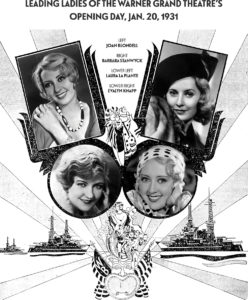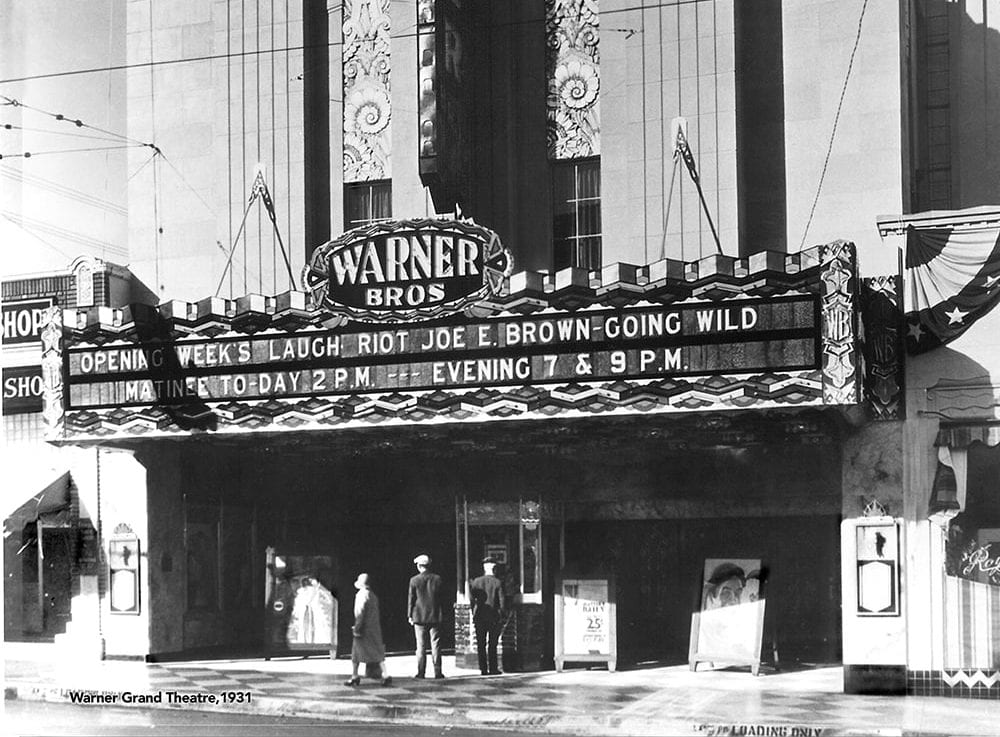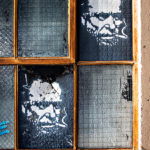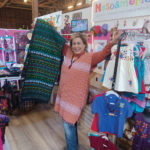HOW IT ALL STARTED
The Warner Grand, originally called the Warner Bros. San Pedro Theatre, was developed as part of Warner Bros. Pictures’ 1928 expansion plan to bring new “picture houses” to suburban Los Angeles neighborhoods. San Pedro, with its vibrant maritime economy, piqued the interest of the Warner Bros. scouts who purchased the property on 6th Street near Pacific Avenue. This was an ideal location because it was the main bus thoroughfare for thousands of longshoremen, fishermen, cannery workers, and shipbuilders who worked at the San Pedro waterfront and Terminal Island. The theater was designed by the prolific team of architect B. Marcus Priteca and designer Anthony Heinsbergen. Completed in 1931 for just $500,000, the theater has indeed stood the test of time.
GROUND BREAKING
On June 18, 1930, over 500 citizens gathered on 6th Street for a momentous ceremony. Jack L. Warner, Warner Bros. president and one of the four Warner brothers, declared the theater “the castle of your dreams.” He sent his son, Jack Warner, Jr., to break ground alongside top stars of the day, including Laura Lee, Claudia Dell, and Grant Withers.
A STAR-STUDDED CROWD WELCOMES AN EXTRAORDINARY THEATRE
Seven months later, on January 20, 1931, thousands gathered for the highly anticipated opening day. Back-to-back shows were sold out — both emceed by actor Frank Fay and featuring Warner Bros.’ new comedy Going Wild with Joe E. Brown. Brown was a big star of the day, though he’s probably best known in later years for Some Like it Hot when he played the batty millionaire who fell for a cross-dressing Jack Lemmon on a cruise.

Artistic montage created using artwork from the Warner’s opening day program. (photo: Grand Vision Foundation archives)
Stylish film stars were there, including Barbara Stanwyck, Joan Blondell, and Loretta Young. Also on hand were dashing leading men Lawrence Gray, Edward Woods, and Joe Donahue. These actors were under contract with Warner Bros.; part of what was called the studio’s “stable,” and appearances were part of the job. Uniformed military officers, business leaders, and Warner Bros. execs also mingled with the enthusiastic crowd.
At 6 p.m., the doors swung open, revealing a red-carpeted lobby with an elaborately decorated ceiling, elegant furnishings, and a large tile water fountain, whose look is now lost to history. Fun fact: In those days, theater lobbies didn’t have concession stands. Red carpeting extended through the lower and mezzanine level smoking lounges. Young men from town, trained as ushers, wore white uniforms and used a fascinating “sign language” to communicate over the crowd as they guided ticket holders to open seats.
There must have been a great hush as the first audience entered the lavish 50-foot-high two-story auditorium. There were 1,500 plush seats, giant chandeliers, and a beautifully painted fire curtain. When they looked up, they saw the stunning carved plaster sunburst ceiling, painted in metallic gold, blue, brown, and silver, that still awes audiences today.
Warner’s General Manager M.A. Silver took the stage and proclaimed, “We now dedicate this new Warner Bros. San Pedro Theatre to you, our friends and neighbors for whom it was built . . . a most hearty welcome!”
And with that, the Warner Bros. Theatre began her long life, experiencing the ups and downs of the 20th century movie theater and surviving to become San Pedro and the South Bay’s last remaining historic movie palace and now, a beloved landmark and performing arts venue. wgt






Comments